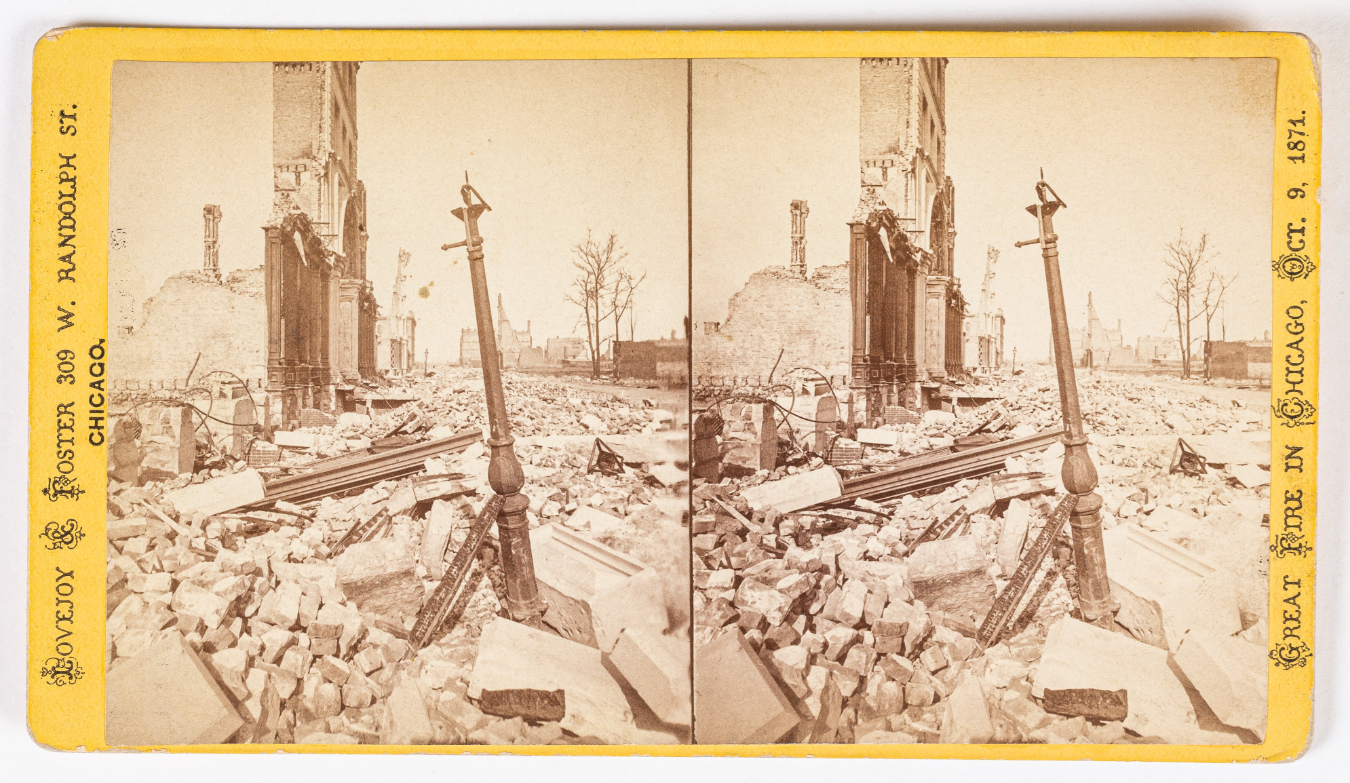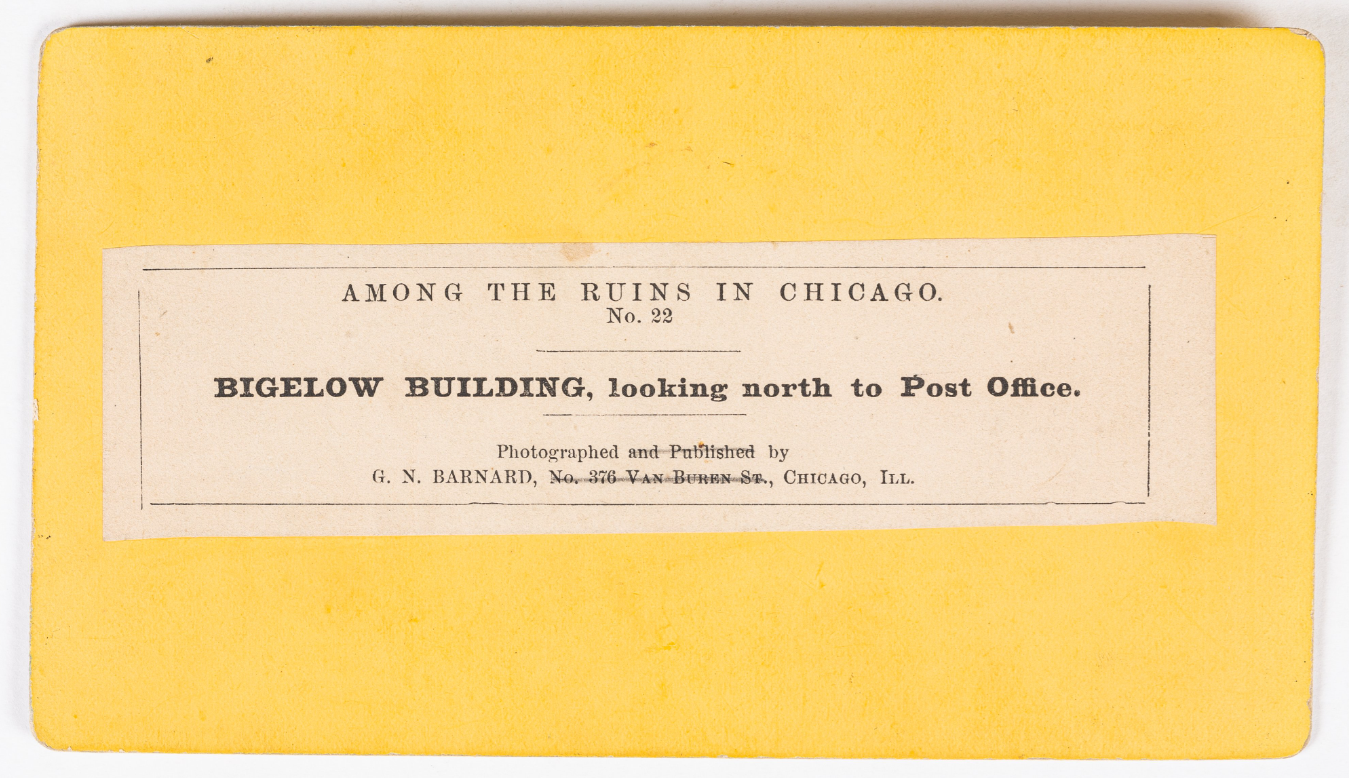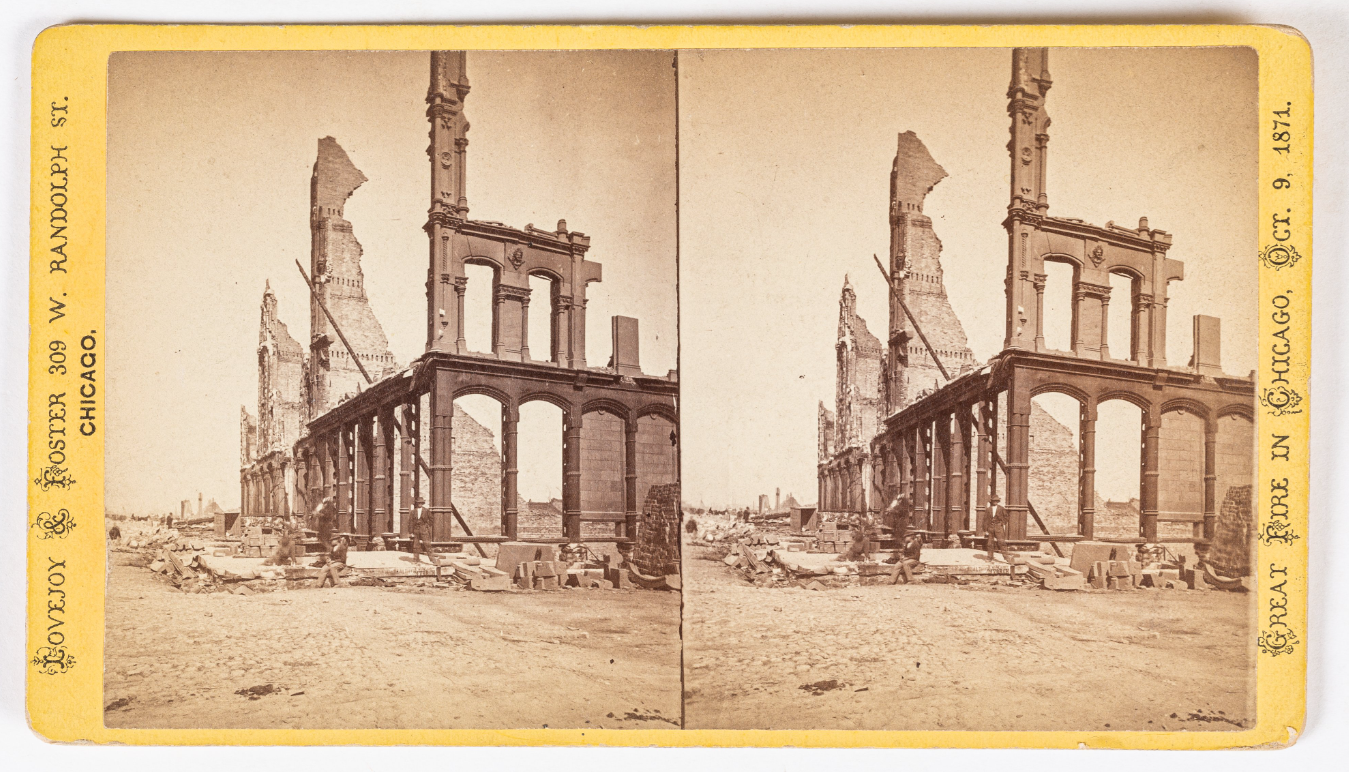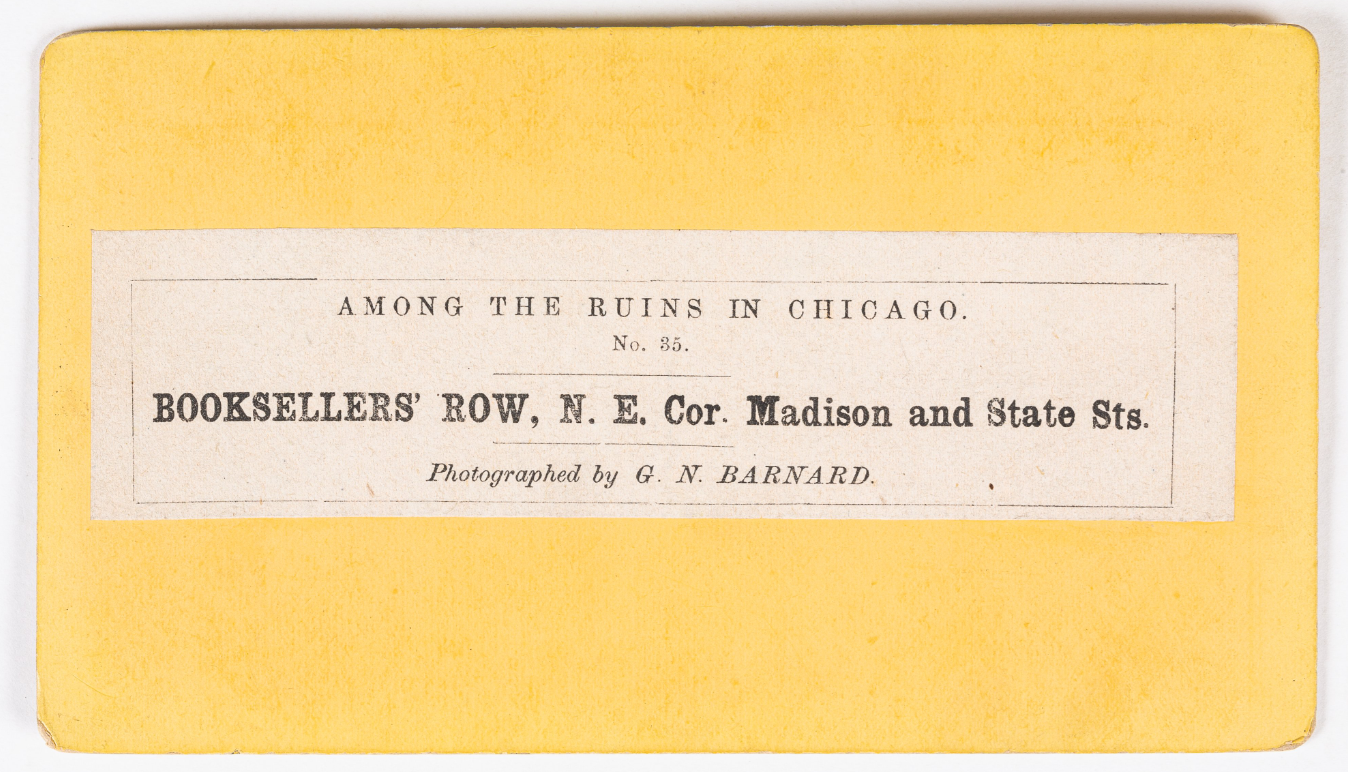October 8, 1871 – On this day in 1871, the Great Chicago Fire erupted. The fire burned for two days, destroying buildings, claiming about 300 lives, and causing an estimated $200 million in damages. In all, the fire decimated a four-by-one-mile area of Chicago, including the city’s business district. The city quickly began reconstruction efforts, fostering a newly booming economy and a population to match.
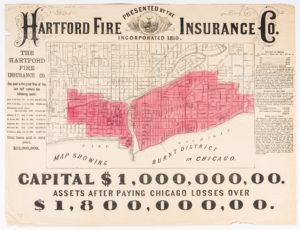
On October 18, 1871, The Chicago Times reported on the fire and the destruction it caused, as well as the rescue and reconstruction which was already underway.
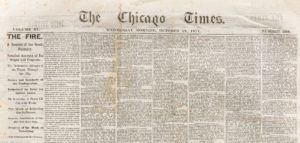
The fire took a lot from Chicagoans, but much of the physical infrastructure in the city remained intact, allowing for rebuilding efforts to begin quickly. Within the decade, the city’s population expanded from an estimated 324,000 to 500,000 people. By 1890, the city’s population reached over 1 million – and Chicago had become a city prosperous enough to rival New York.
Top left: Photo by G.N. Barnard showing the ruins of the Bigelow building looking north to the Post Office.
Bottom left: Photo by G.N. Barnard showing Booksellers Row.
Though urban legend says the fire started when a cow kicked over a lantern in a barn owned by the O’Leary family, the real cause of the fire has never been confirmed. In 1997, the Chicago City Council passed a resolution that exonerated Irish immigrant Catherine O’Leary and her much-maligned cow. Today, the training academy for the Chicago Fire Department is located where the Great Chicago Fire began, on the former O’Leary property.
View the American Antiquarian Society catalog record for The Chicago Times here:
https://catalog.mwa.org/vwebv/holdingsInfo?searchId=437&recCount=10&recPointer=0&bibId=9256
Watch a video featuring this blog post here:

